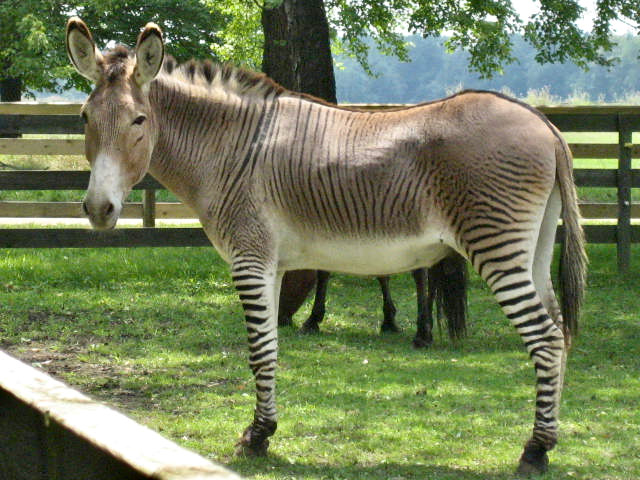2.15 Speciation
What is a species?
It is surprising that, given the frequency and ease with which the term is used, there is no universally accepted definition of “species”. Historically, and in many contemporary uses, a species is defined as a group of actually or potentially interbreeding populations of individuals. This is the biological species concept; and its applications are vast. There are limitations to this species definition (especially in the cases of asexual organisms and hybridizing populations) but for the purposes of this course the biological species concept is sufficient.
Speciation
Speciation is the process of one species diverging into two species. In the typical model of speciation, a population becomes split into two populations that are physically separated and are no longer able to breed and exchange genetic variation. For example, a river might become re-routed after a storm and separate two populations. These populations begin to gain different mutations and experience different environmental conditions and different random events of genetic drift, thus diverging in their evolutionary trajectories. Over time, the populations become sufficiently distinct to warrant identification as separate species because they cannot interbreed.
Species may not be able to interbreed because of reproductive isolating mechanisms, which can be either a pre-mating isolating mechanism or a post-mating isolating mechanism. Pre-mating isolating mechanisms are often behavioral differences (such as different songs in birds) or habitat preferences that prevent two individuals from courtship or copulation. Post-mating isolating mechanisms often result from genetic incompatibility, whereby offspring may result but they are not viable or capable of reproduction themselves because of large genetic differences between the two parents of different species. For example, the mating of a zebra and a donkey can create an offspring called a zonkey, but that offspring cannot reproduce (Figure 2.19). Speciation can also occur when populations are in the same physical space, but they are reproductively isolated in other ways.

Content on this page was originally published in The Evolution and Biology of Sex by Sehoya Cotner & Deena Wassenberg and has been expanded and updated by Katherine Furniss & Sarah Hammarlund in compliance with the original CC-BY-NC 4.0 license.
- Photo from Wikimedia Commons by Ruth Boraggina, used under CC 2.0 Generic License ↵

